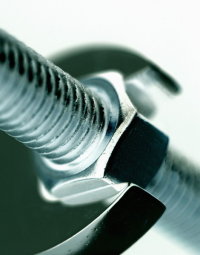CAD systems - specifications are still hard to get in metric
- Metric Tags:
The shop floor and manufacturing process is full of more English measurement potholes. Converting to inches shaves 10ths off of tolerances by rounding. Lathes, mills, grinders, and other tool making equipment and support equipment have dial indicators and measurement scales all based on the english system. All gauging equipment and tools such as sliding calipers, micrometers, and test equipment like torque wrenches use of the English measurement system and have to be replaced with their metric system equivalents.
Duplication creates waste such as tools for production where most companies have metric and english drill bits, taps, roll thread dies, etc... Along with dual head markings for inch-grade and metric-property class. This duplication along with the efforts for conversion between the two systems adds up to a tremendous amount of waste.
Office systems and subcontracting of services for manufacturing operations, heat treating, plating, etc... need to be analyzed. Not only from an engineering drawing stand point of linear measurement, volume, and weight but production control, purchasing, and accounting systems use of weight and piece tracking. With all the underling systems and measurement tools it's easy to see why changing from English measurement to the metric system will take a long time and cost us all a lot of money in the process.
By Patrick Winter
Source: http://EzineArticles.com/?expert=Patrick_Winter
